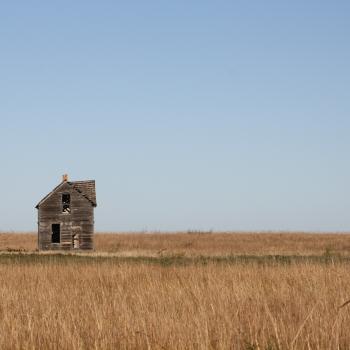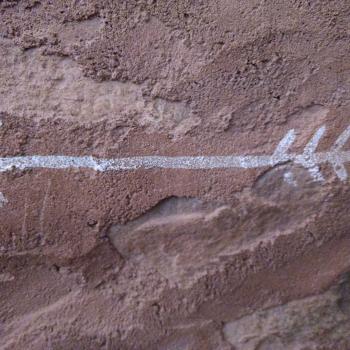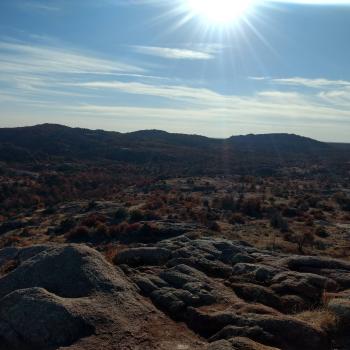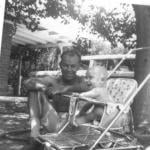
We’re in a what’s next moment in a what’s next season. Spring has broomed winter away. It’s time for planting and growing. And it’s a season of graduation, when students are making big plans for college and work and relationships. What’s next?
I’m a bit of a what’s next addict. It’s a big, shiny, new kind of question for me. I love to think about what’s up and coming. Make plans. Sketch the future. Dream and scheme. What’s next? plays to my (sometimes holy) ambition. In the best sense, what’s next helps me keep my edge, maybe avoid a few ruts—the “unhealthy oversettledness” I recently heard a pastor sagely describe.
But what’s next is also a risky question for me. It plays to my sinful tendencies to get bored easily. What’s next gives me itchy feet, makes me pine for that further horizon. Someone said to me a couple of years ago, “You never stop thinking, do you?” I’m not sure if it’s true, but in my worst moments, my mind spins like a pinwheel. What’s next?
The apostle Paul was a what’s next aficionado. He was already dreaming of Spain while laying the groundwork for a trip to Rome (Romans 15:24). Paul was always thinking ahead, setting goals, pouring over his map of the Mediterranean and plotting his next step. Take this road. Board that ship. Preach and teach and find that next person who might respond to the good news of Jesus. Paul had an urgency about his life.
What makes Paul such an intriguing figure is that even in his hunger to keep moving forward for God, he maintains an equal desire to go deeper with God. Paul writes to the Thessalonians instructing them to work and be active and to not grow “weary in doing what is right” (2 Thessalonians 3:6-13). But in the same breath, he tells them “May the Lord direct your hearts to the love of God and to the steadfastness of Christ” (3:5).
Like the Thessalonians, we need both: going forward and going deeper. It’s the classic distinction between contemplation and action. Mary and Martha. But it’s more than that. To live fully and truly, we need to do the things we were created to do, and we need to find our identity and satisfaction beyond those things.
There are things we must do with our lives–or as is more often the case: things we can’t not do–in order to become who we were created to be. That’s a sort of faith statement, but it’s one that rings true regardless of a person’s faith commitments–or lack thereof. Atul Gawande writes in his book Being Mortal that “we have a deep need to identify purposes outside ourselves that make living meaningful and worthwhile” (p.127). Indeed, people who sense that they have accomplished their life mission are often those most at peace in the face of death. We have to go do our thing. Write the book. Raise the family. Create the company. Concoct the wonder molecule that implodes cancer. Discovering and doing whatever God has laid on our hearts is part of what makes life good and meaningful and satisfying.
And yet, the good, meaningful, and satisfying life is never circumscribed by doing. We also have to come to peace with ourselves apart from whatever we accomplish. Or don’t. We have to find our way into an identity as beloved by God, stamped with God’s image and likeness. Accomplishments–even the good ones–fade with time. Unless we want to live in the past, rehearsing the epic sagas of our lives like Vikings, we have to discover our identity in the love of God.
Thus Paul’s words to the Thessalonians: “May the Lord direct your hearts to the love of God and the steadfastness of Christ.” It’s the love of God that undergirds our identity. It’s Christ, present to and with us in the hurly burly of life that makes it possible for us to live steadfastly, to be where we are, with who we are. Through the love of God, the places we’re in and the things we’re doing acquire a kind of depth.
What’s next for you? Graduation? Work? College? Family? Whatever your plans and dreams, may you go forward and go deep. May the Lord direct your hearts to the love of God and the steadfastness of Christ.












